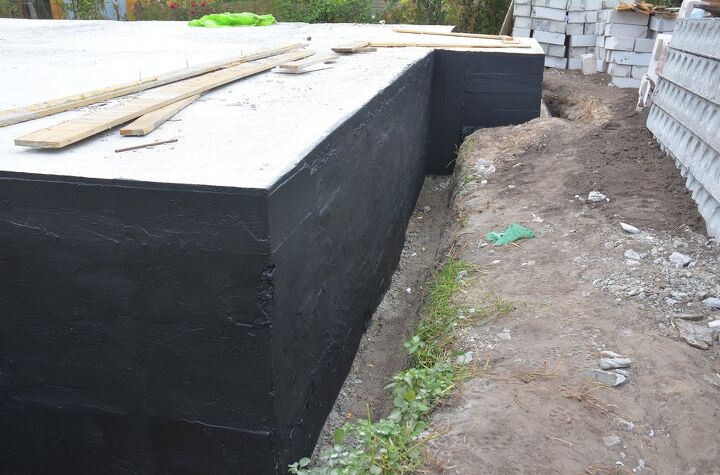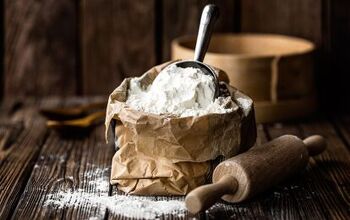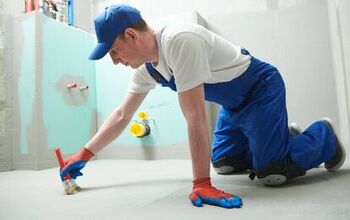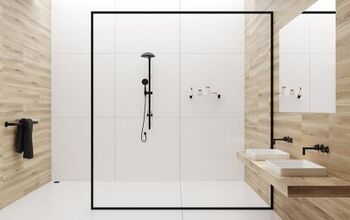Interior vs. Exterior Basement Waterproofing: Which Is Better?

If you’re considering waterproofing your basement, there are two main methods to look into. Both the interior and exterior basement waterproofing processes come with their own pros and cons. This article will cover both methods in detail to help you decide which is the best for your home.
Interior basement waterproofing is effective for homes with minor moisture and condensation, but it’s often considered a temporary fix. Meanwhile, exterior basement waterproofing is highly effective and targets the problem’s source, but it’s disruptive, labor-intensive, and more costly. If your home has water damage, a combination of interior and exterior basement waterproofing methods is typically the best solution.
Do You Need Foundation or Basement Waterproofing?
Get free, zero-commitment quotes from pro contractors near you.

What Is Interior Basement Waterproofing?
Interior basement waterproofing is technically a form of water management. It does not actually make your basement waterproof. Instead, it manages the moisture that does make its way into your home.
The process of interior basement waterproofing starts with using a waterproof sealant. This sealant is applied to any holes and cracks in the basement floors and walls. It’s also used around windows and doors.
After the sealant is applied, drains and sump pumps are sometimes installed as well. One common interior drainage system is called a French drain. This involves digging a trench along the basement floor’s interior perimeter. Then, a drain and sump pump are put in to move the water out.
Sometimes, interior waterproofing is the only option available. This is true when neighbors’ houses are in very close proximity. It’s necessary to excavate the soil around the foundation for exterior waterproofing; this isn’t possible when neighbors are too close.
Pros Of Interior Basement Waterproofing
The most notable benefits of interior basement waterproofing are that it’s the easiest and most affordable method. It works well to handle minor dampness and condensation.
Another advantage of interior waterproofing is that the waterproof sealants used typically come with extended warranties. They are effective in lowering humidity levels and preventing condensation.
Interior basement waterproofing is typically the preferred option for homeowners who don’t want to ruin their landscaping. Since soil excavation is necessary for exterior waterproofing, it’s guaranteed to destroy any landscaping surrounding the foundation of your home. Luckily, you can avoid this by choosing interior waterproofing instead.
Cons Of Interior Basement Waterproofing
Unfortunately, there is a downside to interior basement waterproofing. It doesn’t provide enough protection to stop major leaks.
In addition, although the sealants used are effective, they don’t address the source of the problem. Typically, professionals must handle this from the outside. Interior basement waterproofing manages, rather than solves, the problem of water damage.
What Is Exterior Basement Waterproofing?
Exterior basement waterproofing is a much more involved process than interior basement waterproofing. It begins with the excavation of the soil around the foundation of the home. The foundation walls are thoroughly power washed and left to dry.
Once they are dry, a waterproof sealant is applied to the walls of the house. In some cases, waterproof tiles are also added around the perimeter of the foundation. Sometimes, a trench drain is installed as well.
The maintenance of the gutter systems is an important part of exterior basement waterproofing. The gutter systems, sealant, and tiles all work in conjunction to keep water away from your home.
Pros Of Exterior Basement Waterproofing
A huge advantage of exterior basement waterproofing is that the sealant is made to last for the structure’s lifetime. It’s created with a polymer base that is extremely durable.
Exterior basement waterproofing also protects those with health conditions by preventing the growth of mold and mildew. Often, dampness and humidity create suboptimal living conditions for those with allergies, asthma, and other health issues.
When your home has exterior waterproofing, you can rest assured that your belongings will remain unaffected by water damage. Plus, this long-lasting solution can even increase the value of your home.
Cons Of Exterior Basement Waterproofing
While there are plenty of benefits to exterior basement waterproofing, there are also some drawbacks. First, if the waterproofing process isn’t completed during construction, it becomes a much larger undertaking.
Exterior waterproofing requires experienced professionals and the use of heavy-duty tools and machinery. The soil excavation involved can ruin any landscaping surrounding the foundation of the home.
Another issue to consider is that exterior drains are prone to clogging. When clogged, these drains can cause flooding in your basement–which is exactly what you want to avoid.
Overall, the most important drawbacks to consider are the long amount of time, high cost, and disruptive nature of exterior waterproofing.
Interior vs. Exterior Basement Waterproofing: Evaluation Criteria
Here we’ll directly compare interior and exterior basement waterproofing to help you decide which is best for you.
Cost
The cost of waterproofing can vary greatly. If you’re on a tight budget, interior waterproofing that involves filling cracks and applying sealant runs around $1000.
Meanwhile, adding on a French drain system with a sump pump can increase the cost to about $5500. This is usually the most you’ll pay for interior waterproofing.
Exterior waterproofing, on the other hand, is much more expensive. It can cost $10,000 to $15,000 depending on the necessary work. The highest cost will be for waterproofing systems that include an exterior French drain, a sump pump, and exterior sealant.
Effectiveness
Interior basement waterproofing is most effective for areas that don’t have a high water table or lots of standing water. It does not protect your basement from major leaks. Often, interior waterproofing is considered a temporary fix, rather than a long-term solution for water damage.
In contrast, exterior basement waterproofing is considered the most effective method for preventing foundation erosion and overall water damage. It uses a sealant that is built to last for your home’s entire lifetime.
Disruption
The most disruptive part of interior waterproofing is digging an interior trench for a French drain system. Otherwise, interior waterproofing should not cause much disruption in your home.
Exterior waterproofing is another story, however. If done during the construction process, then it won’t cause any issues. But if you want to go back and waterproof your home externally, then it is an extremely disruptive process.
Excavating the soil around your home’s foundation may present issues and is sure to destroy surrounding landscaping. Plus, it is a time-consuming process, and many workers and heavy-duty machinery will be present at your home.
Related Questions
Is exterior basement waterproofing a DIY project?
No, exterior basement waterproofing is not a DIY project. It requires professionals and heavy-duty machinery since part of exterior waterproofing is excavating the soil around your house’s foundation.
Is exterior basement waterproofing covered by insurance?
Insurance usually doesn’t cover waterproofing systems. However, it does cover the cleanup associated with water damage. In most cases, insurance only covers sudden and accidental losses rather than preventive measures like waterproofing.
Is interior waterproofing effective?
Interior waterproofing is effective, but not as effective as exterior waterproofing. Typically, the underlying problems that cause water damage are found outside. Therefore, interior waterproofing often acts as a temporary fix.
Do You Need Foundation or Basement Waterproofing?
Get free, zero-commitment quotes from pro contractors near you.

Interior vs. Exterior Basement Waterproofing: The Final Verdict
A combination of interior and exterior waterproofing methods is typically the most effective. Generally, interior waterproofing on its own is considered water management. It doesn’t prevent larger leaks and is considered more of a temporary fix for water damage.
Exterior basement waterproofing, however, is the best when it is done correctly. It’s the only method of waterproofing that targets the source of the issue.
However, if it is done incorrectly, exterior waterproofing can lead to issues with the drain getting clogged. For this reason, always look for trustworthy professionals to complete the project of exterior basement waterproofing for your home.

With a lifelong passion for writing plus strong enthusiasm for home improvement and DIY projects, joining the team at Upgraded Home was an easy choice. Jessica Allen likes to share helpful information with current and aspiring homeowners. Aside from writing, Jessica loves doing yoga, playing the piano, and dabbling in graphic design.
More by Jessica Allen














![10 Best Electric Pressure Washers – [2022 Reviews & Guide]](https://cdn-fastly.upgradedhome.com/media/2023/07/31/9070600/10-best-electric-pressure-washers-2022-reviews-guide.jpg?size=350x220)











![How To Reset A Whirlpool Cabrio Washer [In 5 Easy Steps!]](https://cdn-fastly.upgradedhome.com/media/2023/07/31/9076531/how-to-reset-a-whirlpool-cabrio-washer-in-5-easy-steps.jpg?size=350x220)
